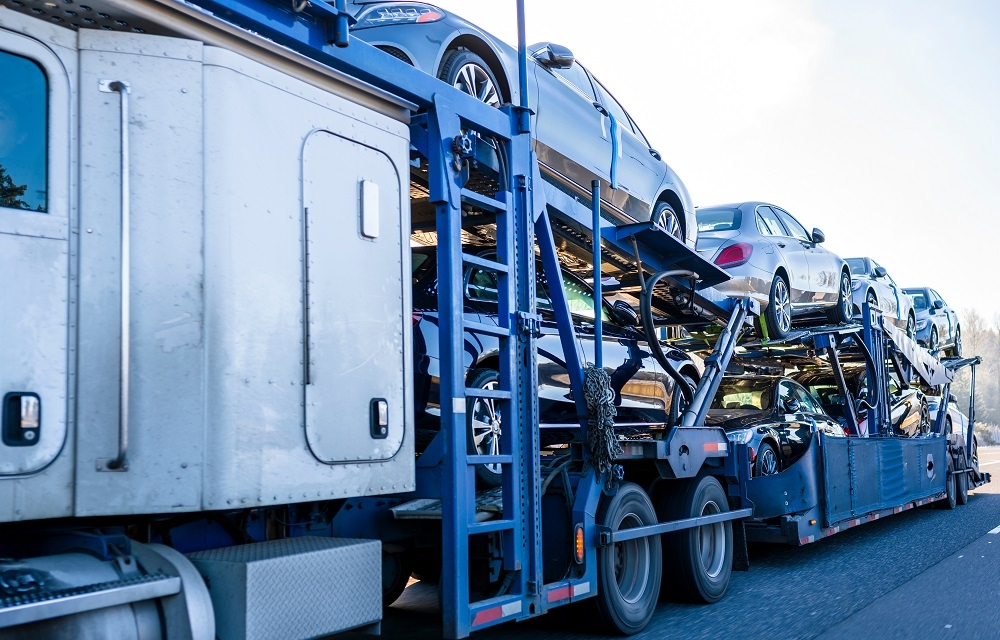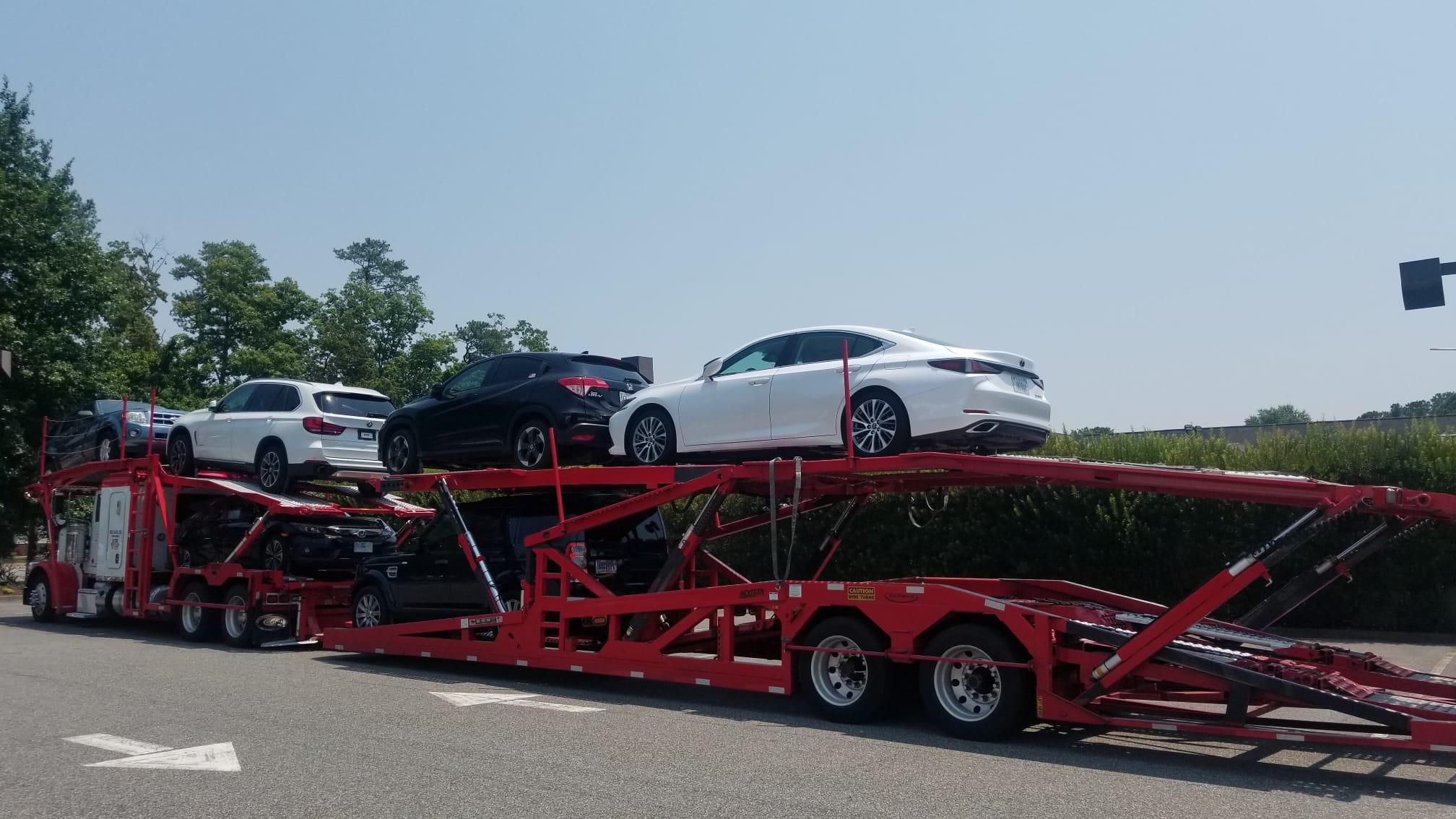Relocation, buying a car, and selling a vehicle are a few common reasons why you may wonder about legal requirements for state-to-state automotive shipping. Understanding the complexities of this topic is vital, as the process carries federal, state, and carrier requirements. Overlooking any of these areas can create headaches before, during, or after shipping, but we’ll explain how to cover your bases and achieve seamless transport.
Requirements and general pointers we’ll cover include but aren’t limited to:
Federal compliance standards
State-specific requirements
Conducting business with a carrier
Required documents
Additional interstate shipping tips
Avoid the potential pitfalls of transporting a car to another state with the rest of our guide below.
Understanding Federal Regulations
Understanding federal regulations for carriers is essential since transporters failing to meet these standards are putting your shipment at risk. Federal requirements are primarily in place to ensure carriers decrease the likelihood of safety hazards.
Transporters unable to meet federal requirements could:
Face penalties or shutdowns, delaying your shipment
Leave you unprotected if you need to make an insurance claim
Expose you to fraudulent practices
The primary federal carrier requirement is a USDOT (US Department of Transportation) number, which is easy to verify. You can check if an auto transporter has a valid USDOT number by entering it on the FMCSA’s (Federal Motor Carrier Safety Administration) website.
The FMCSA also distributes Motor Carrier numbers to signal that an auto transport company is an operating authority for transporting goods state-to-state while clarifying their cargo or passenger type. MC numbers are alternatively called an Interstate Operating Authority. Similar to a USDOT number, you can use the FMCSA’s website to verify an MC Number.
Additional vital FMCSA compliance standards for interstate carrier commerce, most of which you can verify on the FMCSA’s website, include:
Insurance requirements
House of Service regulations
Driver qualification
Vehicle maintenance
Drug and alcohol testing
Hazardous materials regulations
Commercial Driver’s License (CDL) requirements
Electronic Logging Devices (ELD)
Instead of checking all of these carrier requirements against the FMCSA website’s database, you can focus on a few key compliance standards like a USDOT number, MC number, and insurance. Cargo insurance, which pays a customer a claim if necessary, isn’t always required, but most carriers will have it. Liability insurance is federally required.
An experienced auto transport broker will verify that one or more carriers you’re working with meet these key requirements. Carriers are the companies directly transporting your car to another state, while brokers use their network to connect you with available transporters and provide a “best” quote. A broker may need to pair you with more than one carrier if one transporter can’t finish the route because of reasons like a remote destination.
State-Specific Requirements
State-specific requirements, like your title and driver’s license, will generally call for your vehicle registration and ownership documentation. You may need a notary’s authorization if you’re not the car’s owner. A carrier or broker will often handle organizing necessary paperwork.
A bill of lading is also necessary to note your car’s condition when you drop it off for transport and pick it up. Documenting your vehicle’s condition during a dropoff allows you to later prove damages occurred during transport.
Depending on the state, you may need a special license to ship. For example, transporting a vehicle to a state with no sales tax requires a license and permission from that state. When shipping to a state with sales tax, you can check their Department of Motor Vehicles (DMV) or read their online resources to see if taxes are due when you enter.
Don’t forget to research the emissions and safety standards of a state you’re shipping to, as you’ll need to meet these requirements to register in the new state. Regarding safety, you may need repairs or modifications to get a new license plate from the state.
The Importance of Vetting Carriers Beyond Federal Regulations
Working with a reputable carrier will help ensure you properly meet standards when shipping a car to another state, and vetting transport companies goes beyond verifying federal requirements. You should also consider the nature of a carrier’s online reviews.
Customer reviews that indicate you should take your business elsewhere include vehicle damage, communication, and timeliness complaints. While online resources are an excellent way to assess an auto hauler’s reputation, it’s easy to overlook help you can receive from a word-of-mouth reference, so be sure to ask around.
Standard Procedure Requirements for Shipping Your Car to Another State
While many standard procedure requirements for shipping your car to another state aren’t legally-enforced, they have a significant impact on your transport experience’s quality. Learn more about following these standard practices below to help ensure smooth transit.
Prepare Your Car for Shipping
To prepare your car for shipping, you’ll want to clean it thoroughly inside and out and document its condition with clear photographs taken at different angles. A quality cleansing will help you accurately spot any pre-existing damage to report on your bill of lading. Getting your car detailed is the most thorough way to cleanse it for a condition inspection.
You won’t need to prioritize getting a mechanic’s inspection of your car before working with an auto hauler since the vehicle won’t function during transport. Drivers shipping high-value cars on a long-distance route to another state will benefit more from enclosed auto transport than an open carrier where the vehicle is exposed to road and weather elements.
Enclosed carriers offer higher cargo insurance coverage than open carriers, but the protection amount is often divided among the number of cars present. It’s vital to verify a carrier’s coverage limits and how protection is applied to determine if it’s necessary to purchase additional protection.
Additional Preparation Considerations
A carrier’s cargo insurance doesn’t cover personal belongings, and most haulers have restrictions on storing items due to varying weight restrictions. Adjusting your fuel level is helpful since extra fuel adds unnecessary weight, but you should leave no more than a quarter of a tank; enough to help drive to a nearby gas station after delivery, but a low enough amount to avoid unnecessary weight.
Some carriers may require you to turn off your vehicle’s alarm when shipping it to another state. Still, even if it’s not mandatory, silencing alarms can save your battery in case the system activates during transport.



